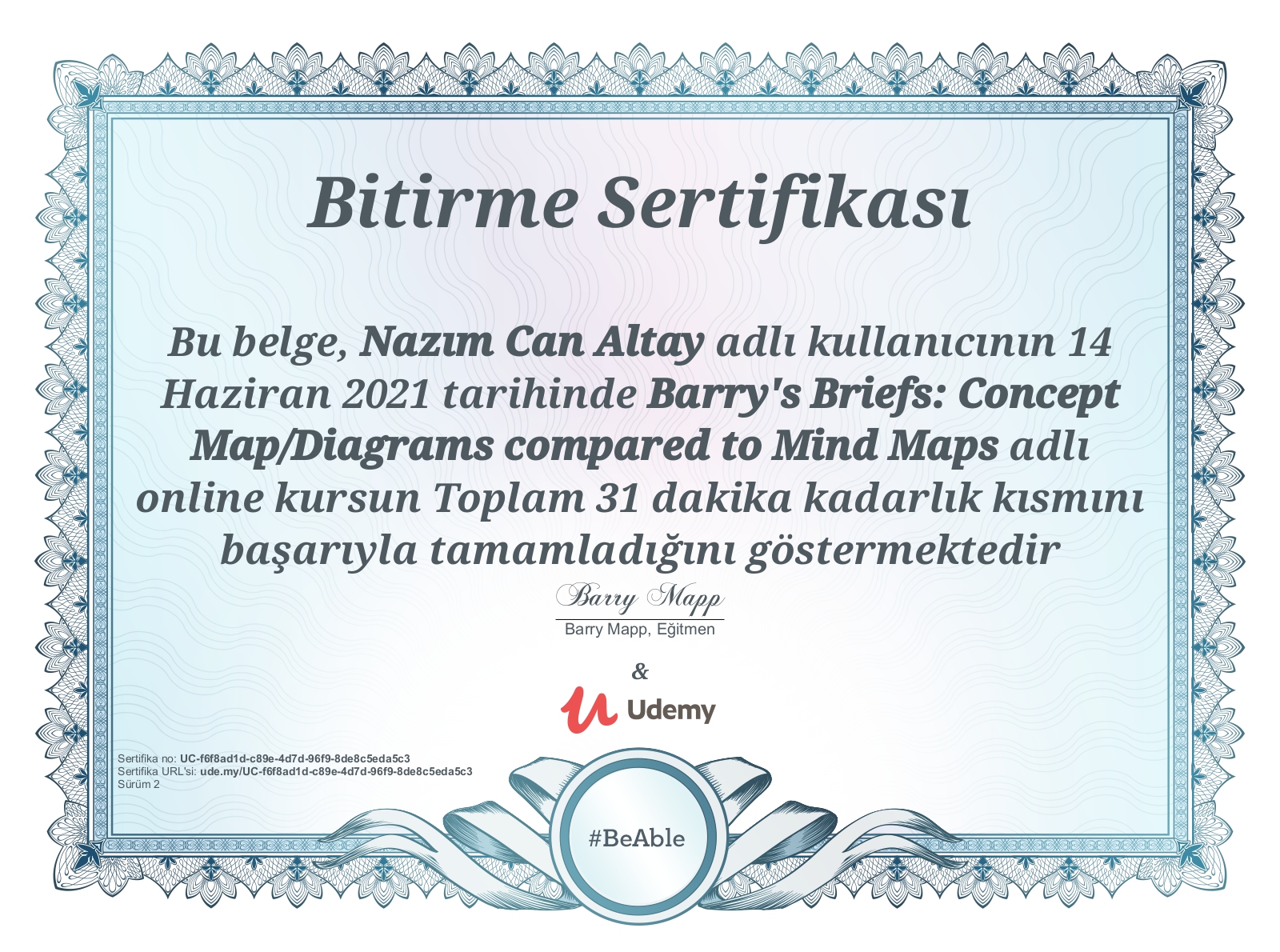Since the couse I enrolled on previously closed, I joined a new one on Udemy and got this cerificate:
Nazım Can Altay - Materials
14 Haziran 2021 Pazartesi
7 Haziran 2021 Pazartesi
Augmented Reality
Augmented Reality is a technology that is used for enhancing the perception of real world with artificial sensory objects, such as sounds, visuals or even smells. The term is really broad but in the context of hardware, AR usually refers to gadgets such as smartglasses, optical projection systems and even monitors. Today, it is not uncommon to see virtual worlds that are only seen through certain apps or gadgets. Probably the best example of AR is Pokemon GO, a game that uses real world locations to create a virtual world. Here's how it works:
Virtual Reality in 21st Century
Virtual Reality has long been an exciting technology, but we only recently started to see its full potential. The "VR" technology, as we know of today, goes back to 1962. The first fully immersive VR system was called "Sensorama", and it was a fully operational machine that could trick its user into thinking they were riding a bicycle through the streets of New York. But, it took many more years to build a commercially viable and portable VR machine. Starting from 2010 with Oculus Rift, many companies have developed VR headsets that can be easily operated with the help of a computer. Companies such as Facebook, Google, Sony, Microsoft and Samsung and many more invested into VR technology. Today, VR is a very real technology and is used in fields such as gaming, simulations and virtual worlds. Here is a demo of what is possible with VR:
31 Mayıs 2021 Pazartesi
Second Life
My friends Kürşat Adanalı, Burcu Başer and Şevval Bozdoğan and I banded together to discuss the potential benefits Second Life can provide for teaching.
24 Mayıs 2021 Pazartesi
Trello Collaborative Board
19 Mayıs 2021 Çarşamba
Social Networking as an Educational Tool summary
This is a summary of my summary about how social networking can be used as an educational tool.
As Internet gains popularity, educators look for ways of utilizing internet tools as educational tools. Of course, in the past there have been attempts of utilizing other forms of media for educational purposes, with some working and most failing. But it is nonetheless worth trying. The primary focus of educators trying to utilize internet tools is on Web 2.0 tools. These tools have some redeeming qualities, and these qualities have been used for boosting the success of these tools. Some of the examples include but are not limited to Amazon, Wikipedia and Podcasts.
The primary source of social networking online is user generated content. By creating their own content, users are able to interract with other users, be it one sided or not. User generated content also creates great opportunities for teachers. But, to utilize these opportunities, teachers need to shape their courses accordingly.
Although the implications of Web 2.0 for education are great, Web 2.0 learners also have some distinct features. These features are both positive and negative, and teachers need to understand Web 2.0 learners before trying to hone their courses to their students.
There are also criticts questioning the "ethics" of social networking as an educational tool. Some of these critics prefer traditional values, some of them question the accesibility of user created content and at the extreme level, these critics say that Web 2.0 learning cannot be "real" education.
Along with the changing learning environment, research environment also changed with Web 2.0. Because of the digitalization of sources, the nature of research has undergone an evolution. This evolution led to certain consequences as well.
Web 2.0 research shows that there are certain design choices teachers can take in order to make the courses better for the Web 2.0 learners. These design choises are chiefly collaboration and student centered courses. These choices are a result of the research into Web 2.0 learners. Apart from design choices, teachers can base their lessons on constructivist theory, as research shows that consructivist theory is compatible with Web 2.0 learning.
5 Mayıs 2021 Çarşamba
Padlet
Padlet is a website that allows its users to create "padlet" on which people can write stuff as post-its and even attach videos to their notes. To create a "padlet" I first clicked "CREATE PADLET" on the main menu. Then, I was greeted with this screen where I could choose which kind of padlet I wanted to create:
My Udemy Certificate
Since the couse I enrolled on previously closed, I joined a new one on Udemy and got this cerificate:

-
Virtual Reality has long been an exciting technology, but we only recently started to see its full potential. The "VR" technology...
-
Augmented Reality is a technology that is used for enhancing the perception of real world with artificial sensory objects, such as sounds, ...
-
Greetings to anyone who has taken the time to read through my blog! This week in the materials class, we learned how to produce a mind map,...



